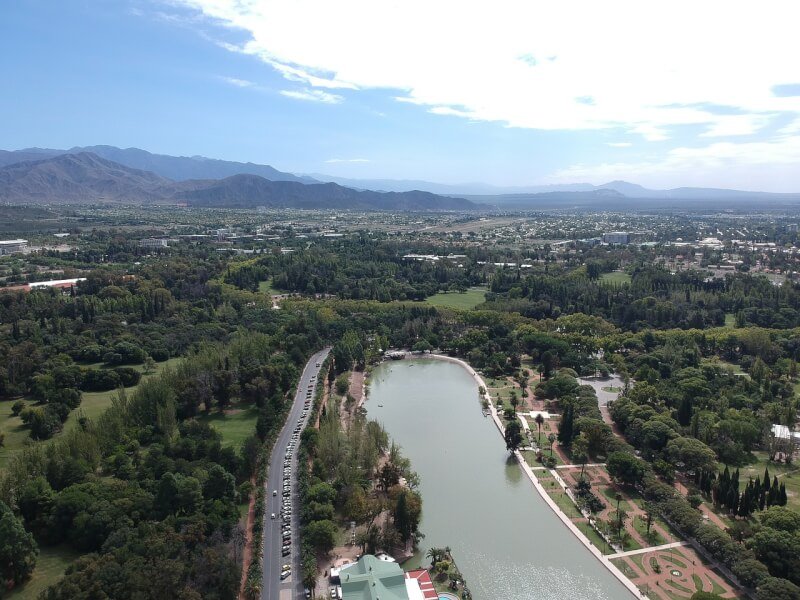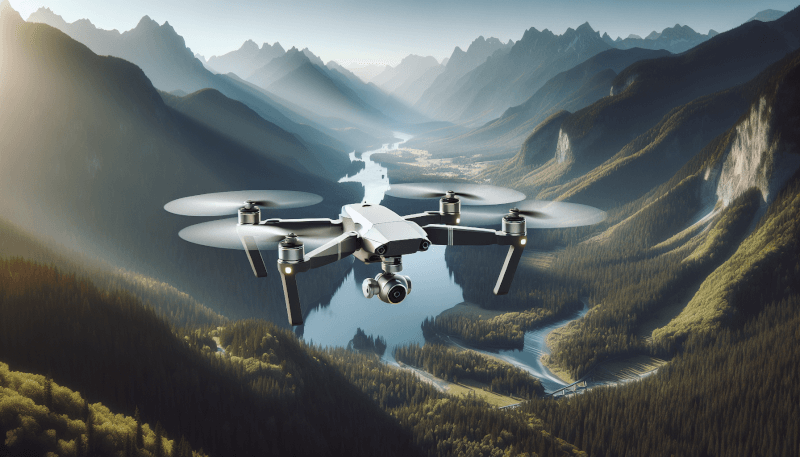Ready to take your drone to new heights? In this article, you’ll discover the top ways to maximize your drone’s range, allowing you to explore even farther and capture breathtaking aerial shots. From optimizing your drone’s antenna placement to utilizing advanced flight modes, we’ll guide you through the essential strategies that will unlock the full potential of your drone. Get ready to soar the skies like never before and create stunning footage that will leave everyone in awe. Let’s dive in and unleash the true power of your drone!

Choose the Right Drone
When it comes to maximizing your drone’s range, the first thing you should consider is the drone itself. Different drones offer different range specifications, so it’s important to choose one that suits your needs. Take a look at the drone’s range specifications before making a purchase. How far can it fly? How high can it go? These are important factors to consider when selecting a drone that will give you the desired range.
Consider the Drone’s Range Specifications
Before selecting a drone, be sure to carefully examine its range specifications. These specifications will outline how far and high the drone can fly. If you’re planning on flying your drone over long distances or in areas with tall structures, you’ll want to choose a drone that has a longer range. On the other hand, if you only plan on using your drone for shorter distances or in open areas, a drone with a shorter range may suffice.
Opt for a Long-range Drone
If you want to truly maximize the range of your drone, opting for a long-range model is your best bet. Long-range drones are designed specifically for extended flights, allowing you to fly further and higher than their counterparts. These drones often have advanced technology and may come with additional features such as GPS capabilities, obstacle avoidance systems, and extended battery life. Investing in a long-range drone will give you the freedom to explore and capture stunning aerial footage without worrying about reaching the limits of your drone’s range.
Invest in a Drone with Strong Signal Strength
Another important factor to consider when choosing a drone is its signal strength. A drone with a strong signal will ensure a stable and reliable connection between the drone and the controller. This is crucial for maintaining control and receiving live video feed from the drone. Look for drones that have strong signal strength and utilize advanced transmission technology such as extended range radios or dual-band Wi-Fi. With a drone that boasts strong signal strength, you can fly with confidence and minimize the risk of signal loss during your flight.
Upgrade Your Drone’s Antenna
One way to improve the range of your drone is by upgrading its antenna. The antenna plays a crucial role in signal transmission and reception, so improving its performance can significantly enhance your drone’s range.
Understand the Importance of Antenna
The antenna is responsible for transmitting and receiving signals between the drone and the controller. Upgrading the antenna can not only extend the range but also improve the quality and stability of the signal. A stronger and more powerful antenna can help overcome obstacles, eliminate interference, and provide a more stable connection between the drone and the controller.
Install Boosters or Amplifiers
Boosters or amplifiers are great additions to your drone’s antenna setup. These devices enhance the signal strength by amplifying the power of the signal transmitted and received by the antenna. By installing boosters or amplifiers, you can extend the range of your drone and ensure a stronger and more reliable connection.
Consider Using Directional Antennas
Directional antennas are another option to consider when upgrading your drone’s antenna system. Unlike omni-directional antennas that transmit and receive signals in all directions, directional antennas focus the signal in a specific direction. This allows for greater range and improved signal strength in that specific direction. By using directional antennas, you can increase the range of your drone and maximize its performance in a particular area or direction.

Optimize the Drone’s Positioning and Orientation
The positioning and orientation of your drone can have a significant impact on its range and signal strength. By following some simple tips and techniques, you can optimize your drone’s positioning and ensure that it maintains a strong and stable connection.
Avoid Obstacles and Interference
When flying your drone, it’s crucial to avoid obstacles and interference that can disrupt the signal. Buildings, trees, and other structures can obstruct the signal and reduce your drone’s range. Try to find an open area with fewer obstacles to fly your drone, especially if you’re looking to maximize its range. Additionally, avoid flying near power lines, radio towers, and other sources of electromagnetic interference that can disrupt the signal.
Maintain Line of Sight
To maximize your drone’s range, it’s important to maintain a clear line of sight between the drone and the controller. This means keeping the drone within your field of vision and flying it in an unobstructed area. Flying your drone out of sight or behind obstacles can significantly reduce the range and signal strength. By maintaining line of sight, you can ensure a strong and stable connection throughout your flight.
Position Antenna Properly
The position of your drone’s antenna plays a crucial role in signal reception. Ensure that the antenna is in an upright position and not obstructed by any part of the drone or accessories. Placing the antenna in a clear and open area will enhance signal strength and improve overall range. For drones with an adjustable antenna, experiment with different angles to find the optimal position that maximizes signal reception and range.
Adjust Gimbal for Better Signal Reception
Some drones come equipped with a gimbal, which is a mechanism that stabilizes the camera and allows for smoother shots. Adjusting the gimbal’s position can also have an impact on signal reception. If your drone’s gimbal obstructs the antenna, it can weaken the signal and reduce the range. Make sure the gimbal is not interfering with the antenna’s position and adjust it accordingly for optimal signal reception.
Improve Battery Performance
The battery is a crucial component of your drone, and its performance directly affects the range and flight time. To maximize your drone’s range, it’s important to focus on battery optimization.
Use High Capacity Batteries
Using high capacity batteries is one of the most effective ways to improve your drone’s range. High capacity batteries have a larger energy storage capacity, allowing your drone to fly for a longer duration before needing a recharge. By investing in high capacity batteries, you can extend the flight time and maximize the range of your drone.
Ensure Proper Battery Maintenance
Maintaining your drone’s batteries is essential for optimal performance and longevity. Make sure to follow the manufacturer’s guidelines for battery care and maintenance. Store your batteries in a cool and dry place, avoid overcharging or deep discharging them, and regularly inspect them for any signs of damage or wear. Proper battery maintenance will not only extend their lifespan but also ensure consistent performance when flying your drone.
Monitor Battery Levels
To maximize your drone’s range, it’s important to keep a close eye on the battery levels during your flight. Many drones come equipped with battery level indicators or telemetry systems that provide real-time data on the remaining battery capacity. By monitoring the battery levels closely, you can plan your flights more effectively and land the drone safely before the battery drains completely. This will not only prevent any mishaps but also help you make the most of your drone’s range.

Upgrade Controller’s Transmitter
The controller’s transmitter is another aspect that can greatly impact your drone’s range. Upgrading to a suitable transmitter can significantly enhance the signal strength and range of your drone.
Upgrade Transmitter to a Long-range Model
If you find that your current controller’s transmitter is limiting the range of your drone, consider upgrading to a long-range model. Long-range transmitters are designed to provide a stronger signal and extend the maximum range of your drone. They often come with advanced features such as extended antennas, higher power output, and better signal processing capabilities. By investing in a long-range transmitter, you can unlock the full potential of your drone and explore greater distances with confidence.
Ensure Line-of-Sight Communication
Maintaining a clear line of sight between the controller and the drone is crucial for optimal signal reception. Upgrade your controller’s transmitter to ensure reliable line-of-sight communication with the drone. Look for transmitters that utilize advanced transmission technologies such as frequency hopping or spread spectrum. These technologies minimize interference and provide a more stable connection, enabling you to maximize your drone’s range.
Optimize Power Output
Another way to enhance the range of your drone is by optimizing the power output of the controller’s transmitter. Some transmitters allow you to adjust the power output, allowing for more flexibility in different flying conditions. Increasing the power output can improve signal strength and extend the range, especially when flying in challenging environments or areas with a lot of interference. However, it’s important to ensure that you comply with local regulations and restrictions regarding transmitter power output.
Adjust Drone’s Settings and Configuration
To maximize your drone’s range, it’s essential to optimize its settings and configuration. By making the right adjustments, you can improve signal and video transmission, minimize interference, and enhance overall performance.
Optimize Signal and Video Transmission Settings
Take the time to explore and adjust the signal and video transmission settings of your drone. Depending on your specific drone model, you may have options to adjust parameters such as transmission power, channel selection, or bandwidth allocation. Experiment with different settings to find the optimal configuration that maximizes signal strength and range without compromising on video quality.
Reduce Wi-Fi Interference
Wi-Fi interference can negatively impact your drone’s signal strength and range, especially in congested areas with many Wi-Fi networks. To reduce interference, consider switching to a less crowded Wi-Fi channel or using the 5 GHz band if your drone supports it. Additionally, keep the distance between your drone and any nearby Wi-Fi routers or access points to minimize interference.
Calibrate Compass and GPS
A properly calibrated compass and GPS are essential for accurate positioning and navigation of your drone. Follow the manufacturer’s instructions to calibrate the compass and GPS regularly. This will ensure that your drone maintains the correct heading and can accurately return to home if needed. A well-calibrated compass and GPS will also help maximize your drone’s range by providing reliable navigation data during flights.
Update Firmware Regularly
Firmware updates often include improvements and bug fixes that can enhance your drone’s performance, including signal and range optimization. Regularly check for firmware updates from the manufacturer and install them as recommended. Keeping your drone’s firmware up to date will ensure that you have access to the latest features and enhancements that can help maximize its range and overall performance.

Utilize Signal Range Extenders
Signal range extenders can significantly boost your drone’s range by enhancing the signal transmission and reception capabilities. Consider using these devices to maximize the range of your drone.
Use Wi-Fi Extenders or Repeaters
Wi-Fi extenders or repeaters are devices that amplify and extend the range of your drone’s Wi-Fi signal. They work by connecting to your drone’s Wi-Fi network and relaying the signal to your controller. By strategically placing Wi-Fi extenders or repeaters between the drone and the controller, you can effectively increase the range and ensure a stronger connection. Consult the manufacturer’s instructions for proper setup and configuration of these devices.
Consider Using Signal Boosting Apps
Some drones have companion apps that come with signal boosting features. These apps utilize advanced algorithms and signal processing techniques to optimize signal reception and transmission. Explore the available options and consider using these apps to maximize the range of your drone. Keep in mind that not all drones have companion apps with signal boosting capabilities, so check with the manufacturer or explore third-party apps that are compatible with your drone.
Employ Range Extender Accessories
Range extender accessories are specifically designed to amplify and extend the range of your drone’s signal. These accessories may include antennas, reflectors, or signal boosters that attach to your drone or controller. They work by focusing and amplifying the signal, allowing for greater range and improved signal strength. When choosing range extender accessories, make sure to select high-quality products that are compatible with your drone and follow the manufacturer’s instructions for proper installation and usage.
Fly in Ideal Weather Conditions
The weather conditions in which you fly your drone can have a significant impact on its range and overall performance. By choosing the right weather conditions, you can maximize your drone’s range and ensure a smooth and enjoyable flight.
Avoid Strong Winds and Stormy Weather
Strong winds can affect your drone’s stability and range, making it harder to control and reducing the time it can stay in the air. Try to avoid flying your drone in windy conditions, especially if you’re aiming to maximize its range. Stormy weather, including rain, snow, or thunderstorms, can also pose risks to your drone’s electronics and decrease its performance. It’s best to wait for clear and calm weather conditions for optimal signal reception and range.
Fly in Clear Skies for Better Signal Reception
Clear skies provide the best conditions for maximizing your drone’s range. Cloudy or overcast conditions can reduce signal strength and range due to the absorption and scattering of signals by water droplets in the atmosphere. Try to schedule your flights on days with clear skies to ensure optimal signal reception and extended range. Additionally, flying in areas with fewer obstructions such as tall buildings or trees will improve signal strength and range as well.

Reduce Drone’s Weight
The weight of your drone can impact its performance, including its range. By reducing the weight of your drone, you can increase its flight time and maximize the range.
Remove Unnecessary Accessories
Evaluate the accessories and components attached to your drone and identify any unnecessary items that can be removed. Accessories such as additional cameras, lights, or redundant parts can add unnecessary weight to the drone and decrease its range. Strip down your drone to the essential components, removing anything that is not required for your specific flight mission.
Use Lightweight Materials
Consider using lightweight materials when building or modifying your drone. Carbon fiber, aluminum alloys, or other lightweight materials can help reduce the overall weight of the drone without compromising its structural integrity. Lighter drones are more agile, have improved maneuverability, and can fly for longer durations, maximizing the range.
Optimize Payload
If your drone carries a payload such as a camera or other equipment, optimize the payload to reduce its weight. Use compact and lightweight cameras, lenses, or other equipment whenever possible. Additionally, minimize the number of batteries or other power sources needed for the payload. By optimizing the payload, you can reduce the overall weight of the drone and extend its flight time, maximizing the range.
Consider Using Signal Boosters or Amplifiers
Signal boosters or amplifiers are additional devices that can significantly enhance the range and signal strength of your drone. Consider using these devices to maximize the range of your drone.
Understand How Signal Boosters Work
Signal boosters work by amplifying the power of the signal transmitted and received by the drone’s antenna. They can increase the range, improve signal strength, and minimize interference. Signal boosters come in various forms, including antennas, boosters, or repeaters, and can be installed on the drone, controller, or both. Understanding how signal boosters work and selecting the right type for your drone can greatly enhance its range.
Choose High-quality Signal Boosters
When selecting signal boosters for your drone, make sure to choose high-quality products from reputable manufacturers. High-quality signal boosters will provide reliable and consistent performance, ensuring a strong and stable connection between the drone and the controller. Research different options, read reviews, and consult with professionals to ensure that you select the best signal boosters suitable for your drone and flying needs.
Follow Manufacturer Instructions
To ensure optimal performance and compatibility, it’s important to follow the manufacturer’s instructions when installing and using signal boosters or amplifiers. Improper installation or usage can lead to signal loss or interference, negating the intended benefits of these devices. Carefully read and understand the instructions provided by the manufacturer and consult their support or customer service if needed.
In conclusion, maximizing your drone’s range requires a combination of choosing the right drone, upgrading its antenna and transmitter, optimizing positioning and settings, utilizing signal range extenders, and considering external factors such as weather conditions and weight reduction. By following these tips and techniques, you can enhance the range and performance of your drone, allowing you to explore further and capture stunning aerial footage. Happy flying!


